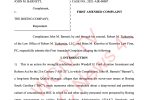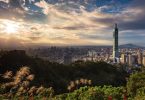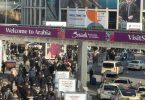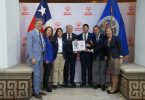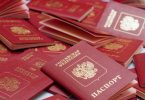A new Prime Ministerial Decree (DPCM) was signed by Italy Prime Minister G. Conte due to the second Italy COVID-19 wave. The news came after midnight on November 5, 2020, and this new DPCM will be in the Official Journal in the morning.
The decree foresees that from November 5 to December 3, Italy will be divided into 3 areas: red (high risk), orange (intermediate), and yellow (safer) zones, each with different rules and prohibitions. The latest news compared to the draft circulated in the afternoon is that hairdressers and barbers will remain open in the red areas.
Only in the next 24 hours will Italians know which category each region will be placed in based on the Rt index (contagious rate) and 21 other criteria. These classifications ire destined to arouse controversy as has already been understood by the clash in the evening between the government and regional presidents who feel deprived of their authority.
Classification of the regions
The red zone includes: Lombardy, Piedmont, Calabria, South Tyrol, and Valle d’Aosta. The inclusion of Campania is uncertain.
The orange zone includes: Puglia, Sicily, Liguria, and Veneto.
All other areas are in the yellow zone.
The regions requested that the epidemiological risk assessment be done in collaboration with the regional prevention departments. The government has promised its “involvement.”
Rules in the yellow zone
The yellow zone is the area with less strict but still more restrictive rules than the decree of October 24. The “curfew” run from 10 pm until 5 am, and during that time, it is forbidden to leave the house except for health or work reasons.
In high school, there will be 100% distance learning. In public transport, half the capacity is expected: 50 percent on buses, metro, and regional trains. The shopping centers are closed on weekends and public holidays. Museums, exhibitions, and gambling halls are also closed. There is a block on sea cruises. Public competitions are suspended, including that of schools, with the exception of those concerning health care personnel. Access to parks will be allowed, provided that the rule of one meter spacing is applied.
Rules in the orange zone
The second area is the orange zone, where there will be a tightening of the rules compared to the yellow areas. Bars, restaurants, ice cream parlors, and pastry shops will close their activity at 6 pm. However, hairdressers and beauty centers will remain open.
Any move to a municipality other than that of residence or domicile should be prohibited, unless there are proven reasons for work, study, or health. For the rest, all the rules of the yellow zones apply: 50 percent capacity on public transport, full distance learning in high school, stop on museums, and curfew at 10 pm.
Prohibitions in the red zone
In regions identified as high risk, any movement into and out of the territories, and even movements within the territory, is prohibited except for proven work needs or situations of necessity or for health reasons.
Distance learning in these regions will start already from the second grade (except for activities with disabled minors). Bars, pastry shops, restaurants, and all shops that do not sell essential goods will remain closed. Only catering with home delivery is allowed and – up to 10 pm – catering with take-away, with a ban on eating on site or nearby.
Food and beverage stores remain open in service as well as refueling areas along highways, in hospitals, at airports, and the industries. There is no lockout for essential services, and pharmacies and supermarkets will be open to the public.
Self-certification
Only the red zone will, therefore, enter a sort of lockdown which in many respects resembles that of the first phase. And on these territories, there is discussion on the use of self-certification in a modified version – strongly desired by Minister Speranza. Of course, it will have to be filled in and shown when you have to go out after 10 pm as that is when the national curfew starts.
Criticisms of the regions
The text in the last few hours has been at the center of a clash with the regions. “The provisions that compress and undermine the role and tasks of the regions and autonomous provinces are arousing strong perplexity and concern,” reads the document signed by the President of the Conference of Regions, Stefano Bonaccini.
“The regions,” the document continues, “ask to launch the refreshment provision together with the Prime Minister’s Office” and “reaffirm the request for unambiguous national measures and, in addition, more restrictive measures at [the] regional and local level … and who can and must order the closure to the public of streets and squares in urban centers.” From Palazzo Chigi, they let it be known that the premier is already working with Ministers Roberto Gualtieri and Stefano Patuanelli on the refreshment decree to be approved this week.
#rebuildingtravel










